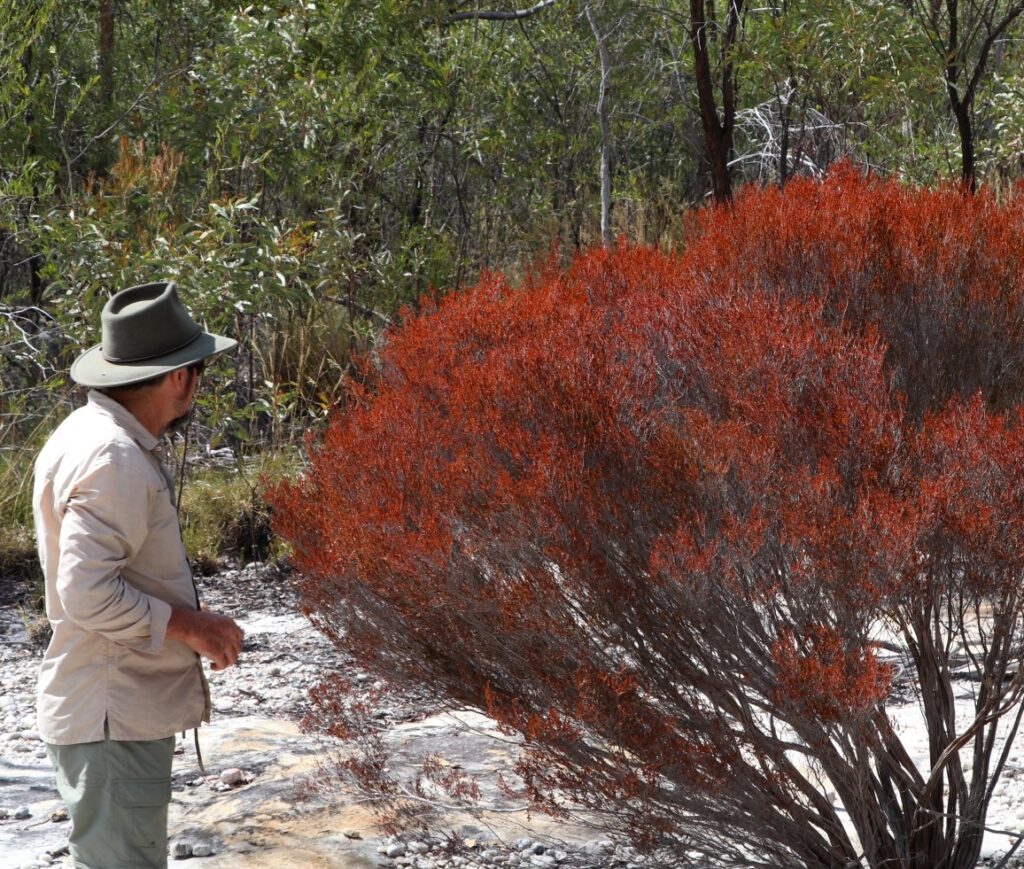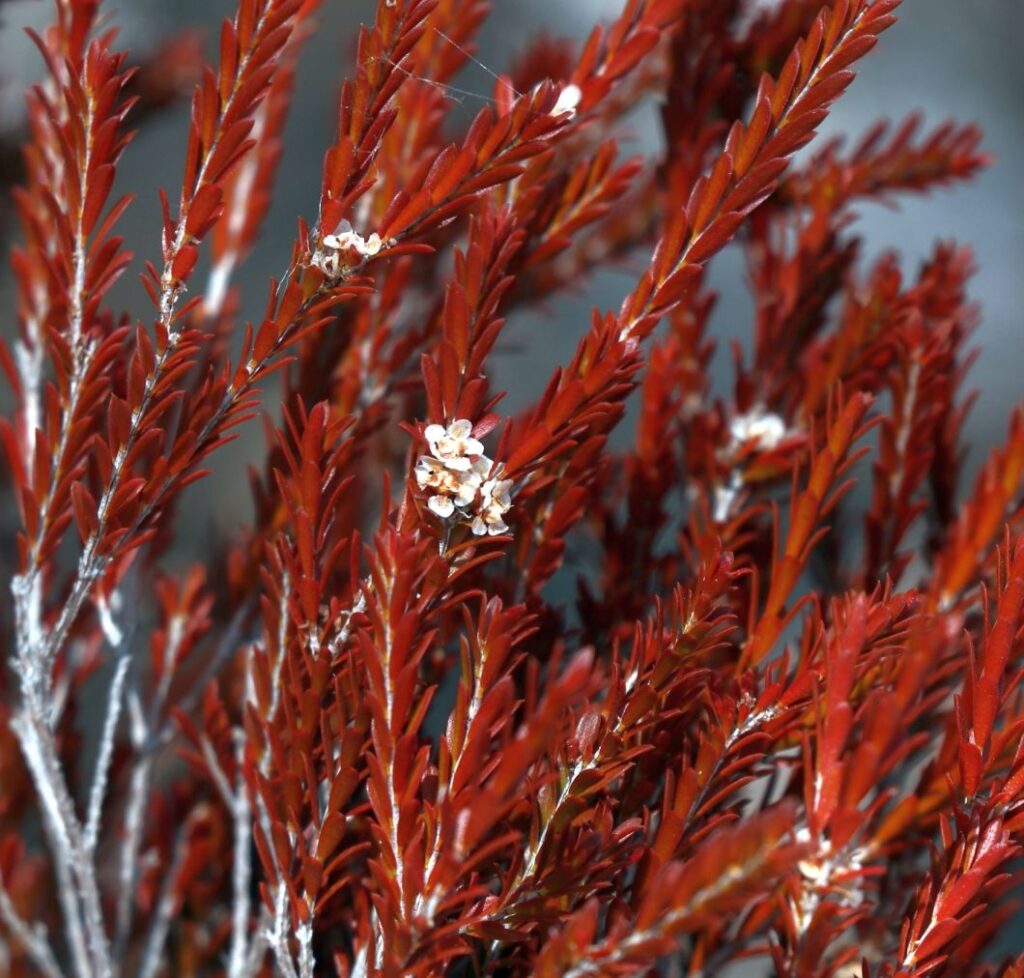Most people have seen deciduous trees change colour before dropping their crisp, drying leaves in response to seasonal drought (in our region) or low temperatures (in cold climates) and then grow fresh new leaves when conditions improve.
However, only a few of our group had observed diallagy – or even heard about it – until we went out to White Mountains National Park in noticeably drier conditions than our previous trips.

‘Diallagy’ describes a remarkable adaptation to survive drought, seen in diverse native plants in Western Australia and a few native species in Queensland. Unlike deciduous leaves, diallagous leaves remain on the plant, retain their normal texture, and revert back to their usual green colour after sufficient rain has fallen.
Near our lunch spot we found Thryptomene parviflora (photo above) had changed its normally green foliage to a glowing reddish-brown. The leaves were lustrous and alive, not dying as we tend to assume for brown leaves. Even more surprising, this plant was bearing a few fresh flowers (photo below).

We also saw the transition to diallagy in Hibbertia ferox (aka ‘Betsy’s fierce Hibbertia’) with some of its leaves still green while most of its foliage had changed to brown (photo below).

Pete sent in a very interesting article about diallagy in WA by Alex George, who coined the term in 2001. For copyright reasons, we can’t publish that article, but if you’d like to request a copy for personal use, you can Contact Us.